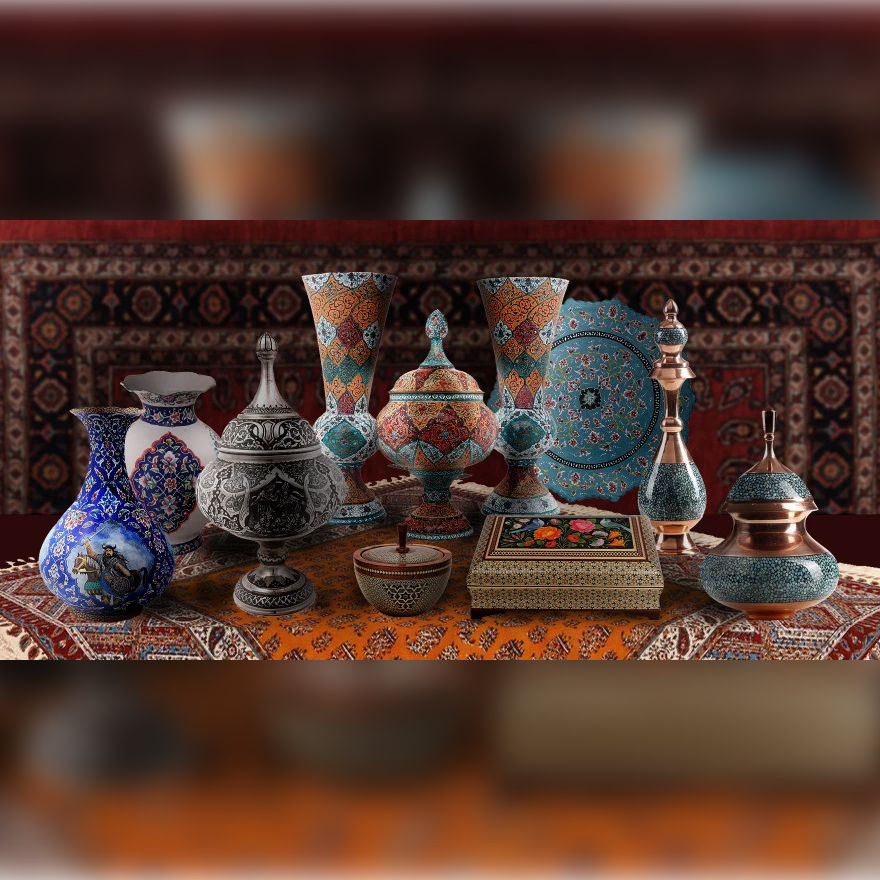Shop by Craft Art
Discover Masterpieces Created by Skilled Artisans
Discover Masterpieces Created by Skilled Artisans
Find the Perfect Item Based on Your Needs and Preferences

Page Contents
Persian handicrafts are vibrant reflections of Iran’s artistic heritage that embody centuries of tradition and craftsmanship. Turquoise Inlaying, Khatamkari (Marquetry), and Engraving (Ghalamzani) are among the most distinguished forms of Persian art.
Turquoise Inlaying (locally known as Firooze Koobi) is a stunning Persian art form that involves embedding small pieces of turquoise stone into surfaces like metal, wood, or ceramics. This beautiful craft is known for both its practical and decorative uses, with the turquoise symbolizing good fortune and protection in Iranian culture. See All Turquoise Inlaying Products
Khatamkari, or Persian marquetry, is an intricate craft where geometric patterns are created using various materials like wood, bone, and metal. It represents centuries-old craftsmanship and is used to create objects of beauty and cultural significance. See All Khatamkari Products
Ghalamzani, or Persian engraving, involves carving complex designs into metal objects such as trays and bowls. The intricate patterns often depict stories from Persian mythology and culture, making each piece not just functional but also a form of storytelling. See All Ghalamzani Products
Persian handicrafts like Turquoise Inlaying, Khatamkari, and Ghalamzani are vital components of Iran’s cultural legacy. These traditional crafts are not only visually stunning but also serve as a window into Persian history and the creativity of Iranian artisans.
Your Information is Safe and Secure
Handmade with Care and Precision
We're Here to Help Anytime.
Fast and Reliable Shipping
Handcrafted by Skilled Iranian Artists
Or
Wow, I didn’t know Persian art was this detailed. That turquoise inlaying looks amazing! Might get one of those mirrors.